CONTENTS
FOREWORD
INTRODUCTION
1 Scope
2 Normative references
3 Terms, definitions and abbreviations
3.1 Terms and definitions
3.2 Abbreviations
3.3 Notation and terminology
3.4 Numbering conventions
4 STS protocol reference model
5 POSToTokenCarrierInterface: Physical layer protocol
6 TokenCarrierToMeterInterface: Physical layer protocol
6.1 TCDU
6.2 Physical connection and signal interfaces
6.3 Character transmission
6.4 Message syntax definitions
6.5 Message field definitions
6.6 Physical layer protocol functions
6.7 Server timing requirements
6.8 RegisterTable
6.9 Companion specifications and RegisterTable instantiations
7 Maintenance of STS entities and related services
7.1 General
7.2 RegisterTable maintenance
7.3 Register maintenance
7.4 tableID maintenance
7.5 FOIN maintenance
7.6 protocolVersion maintenance
7.7 serverStatus maintenance
7.8 tokenStatus maintenance
7.9 softwareVersion maintenance
Annex A (normative) Server state diagrams for request message processing
Bibliography
Figures
Figure 1 – Physical layers of the STS protocol stack
Figure 2 – Character transmission format
Figure 3– Server protocol flow diagram
Figure 4 – Inter-message timing responses
Figure 5 –Transmission error timing
Figure A.1 – Server state diagram for IDRequestProcessing function
Figure A.2 – Server state diagram for ReadCommandProcessing function
Figure A.3 – Server state diagram for WriteCommandProcessing function
Figure A.4 – Server state diagram for BreakCommandProcessing function
Figure A.5 – Server state diagram for undefined command
Tables
Table 1 – Data elements in the TCDU
Table 2 – Bit-encoding of a 7-bit character code
Table 3 – Character encoding example of a 14-bit binary number
Table 4 – Character encoding example of a 4-digit hexadecimal number
Table 5 – Character encoding example of a 4-digit decimal number
Table 6 – Message field definitions
Table 7 – Request messages supported by the server
Table 8 – Response messages supported by the server
Table 9 – Functions supported by the server
Table 10 – Server timing requirements to respond to a request message
Table 11 – Inter-character timing requirements
Table 12 – Transmission error recovery wait period
Table 13 – Generic format for RegisterTable
Table 14 – Generic format for Register
Table 15 – Predefined Registers and registerID values
Table 16 – Instance format for ProtocolVersion register
Table 17 – Defined protocolVersion values
Table 18 – Instance format for TableID register
Table 19 – Instance format for ServerStatus register
Table 20 – Defined serverStatus values
Table 21 – Instance format for SoftwareVersion register
Table 22 – Instance format for BinaryTokenEntry register
Table 23 – Instance format for TokenStatus register
Table 24 – Defined tokenStatus values
Table 25 – Instance format for TokenLockoutTimeRemaining register
Table 26 – Entities/services requiring maintenance service
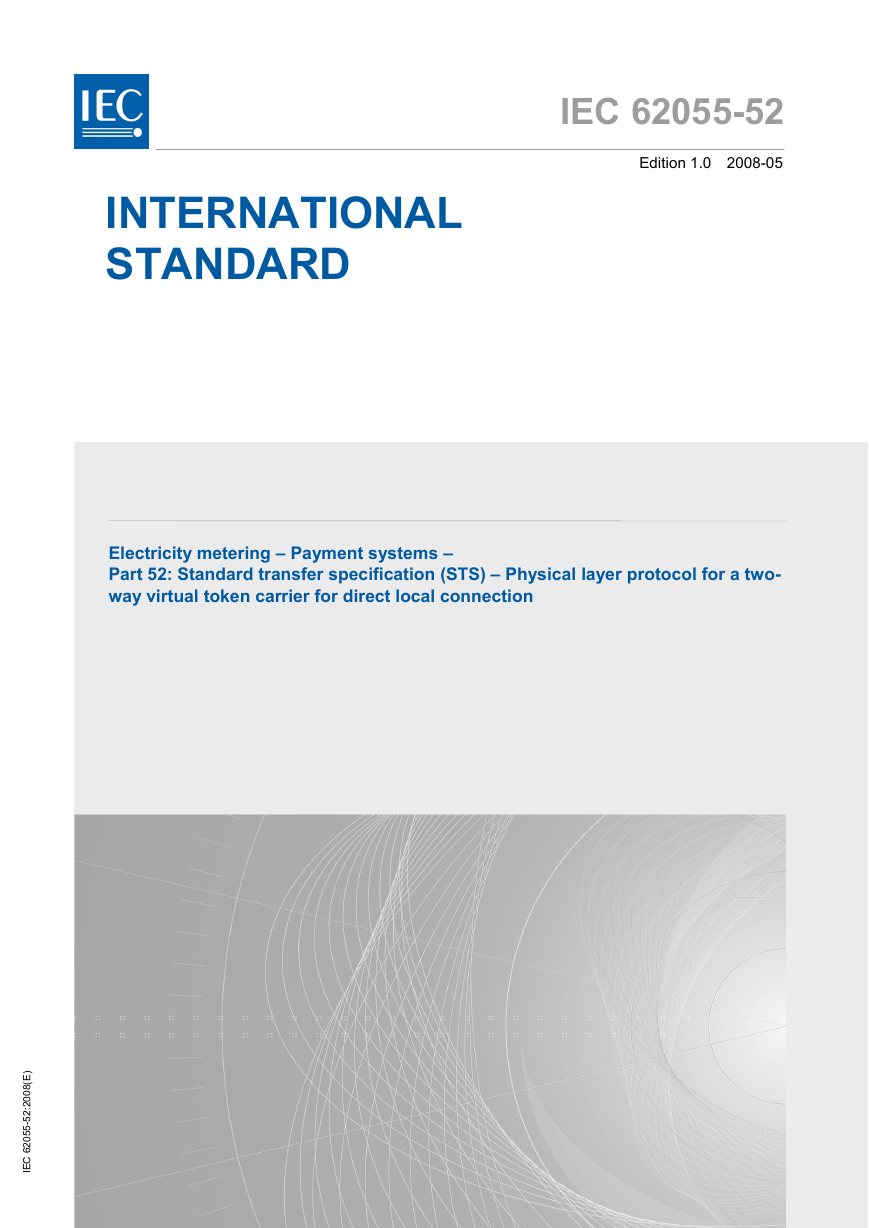
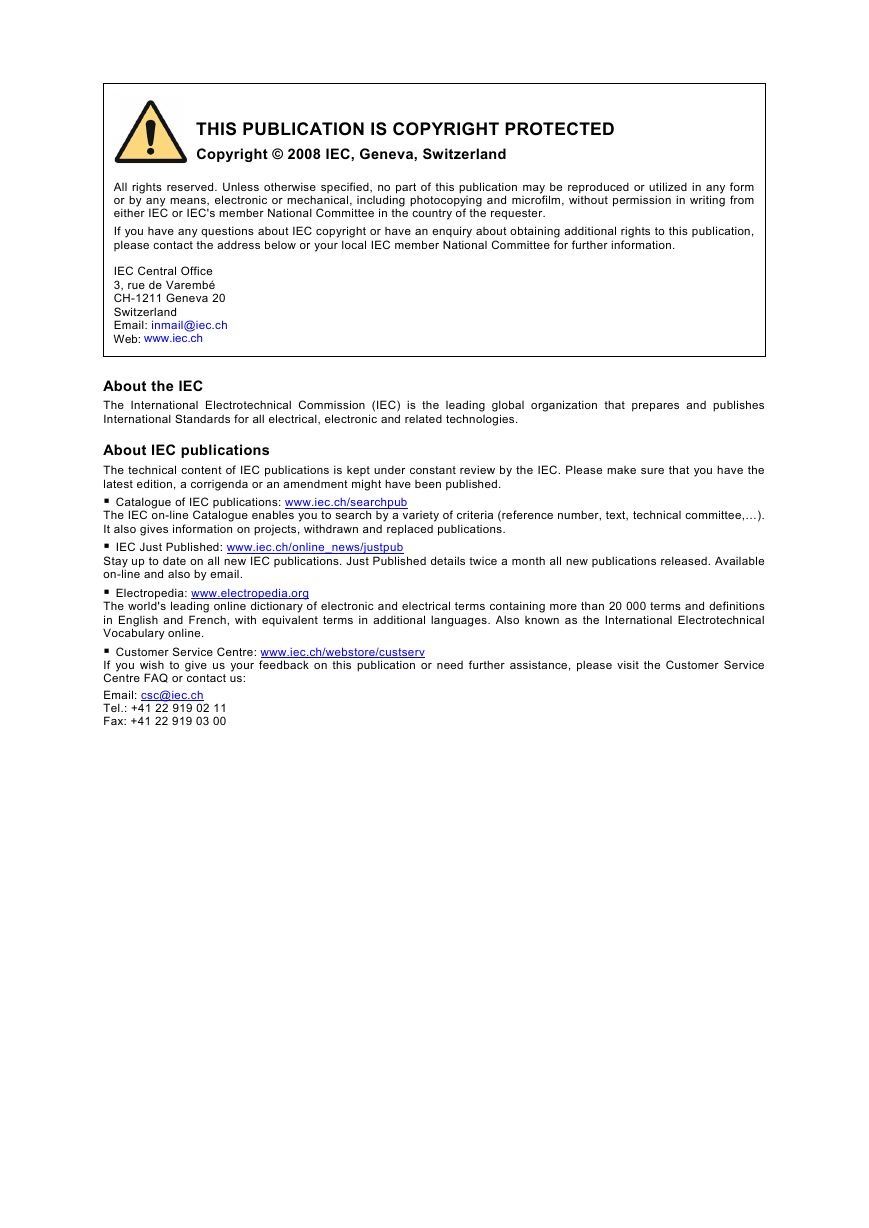
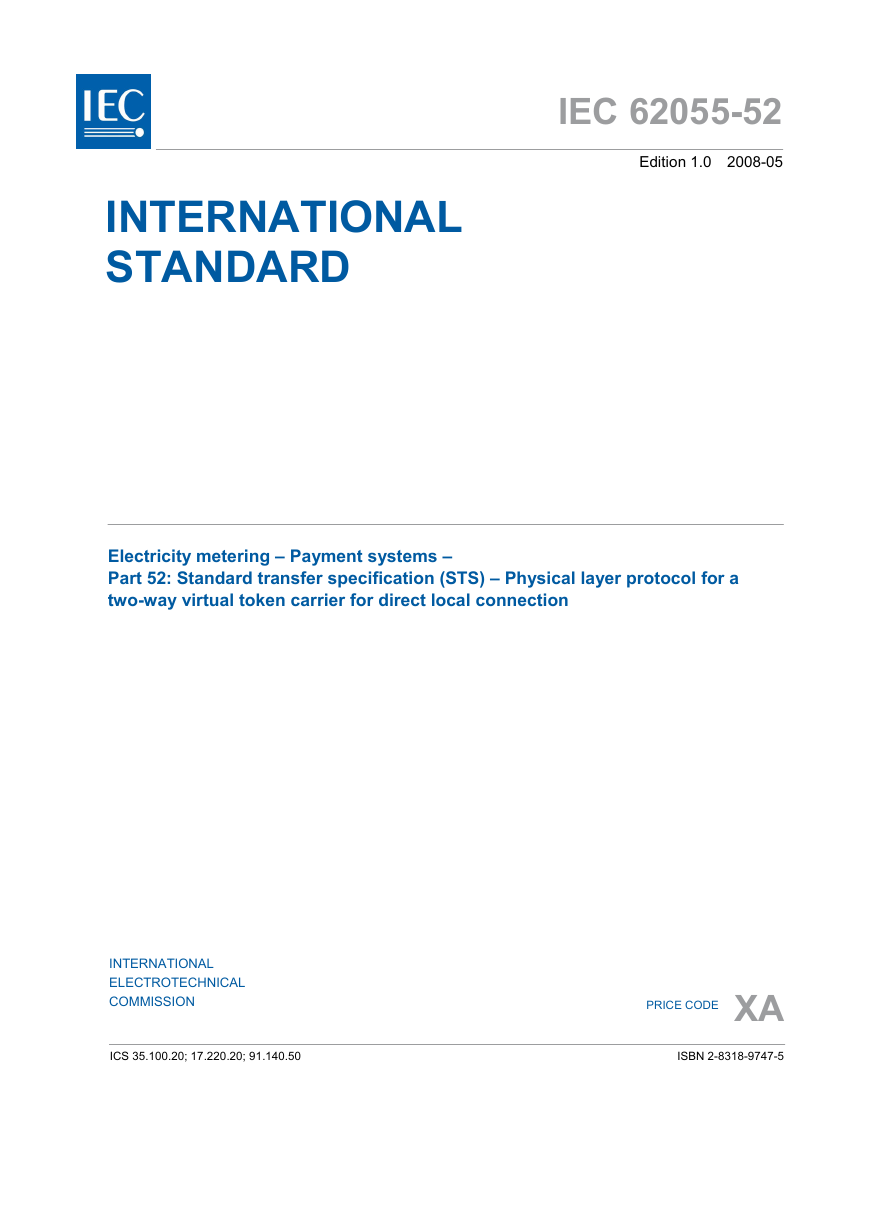
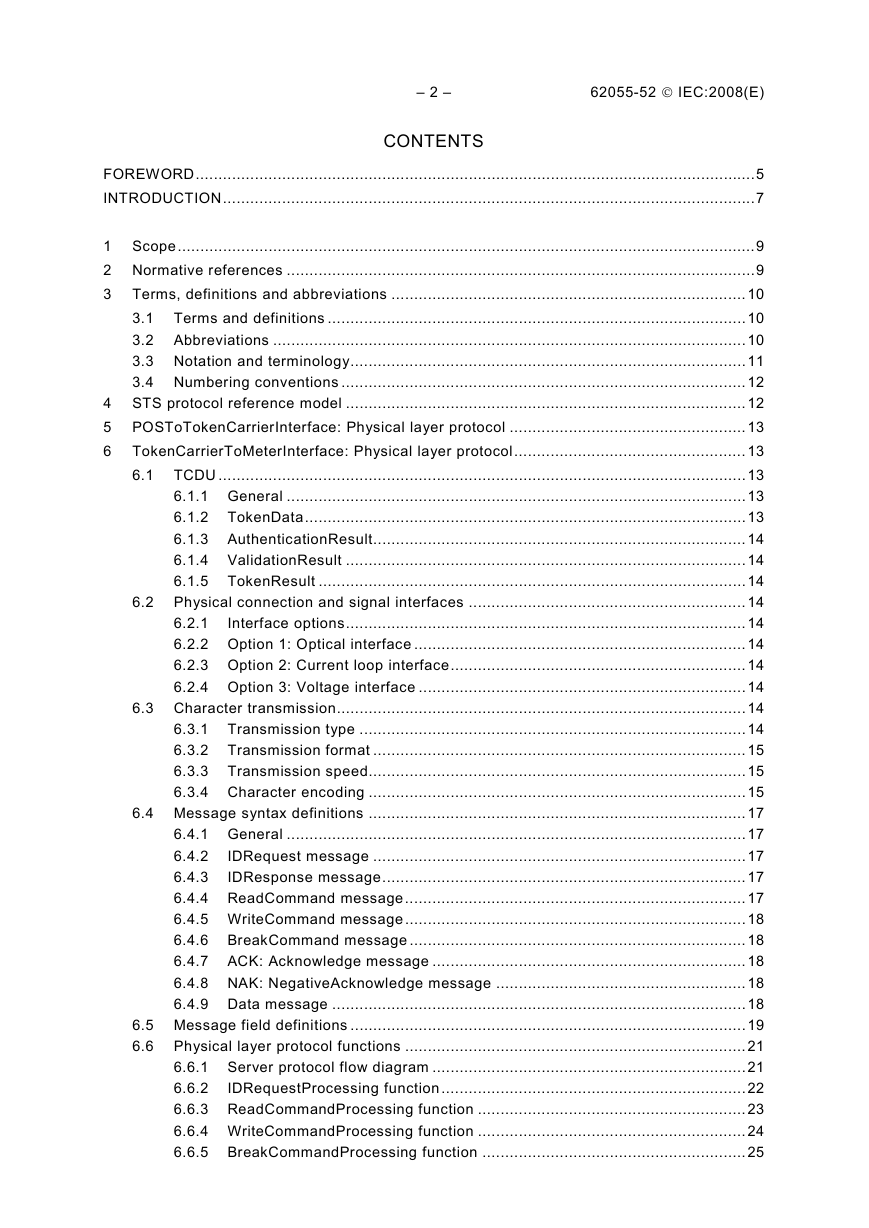

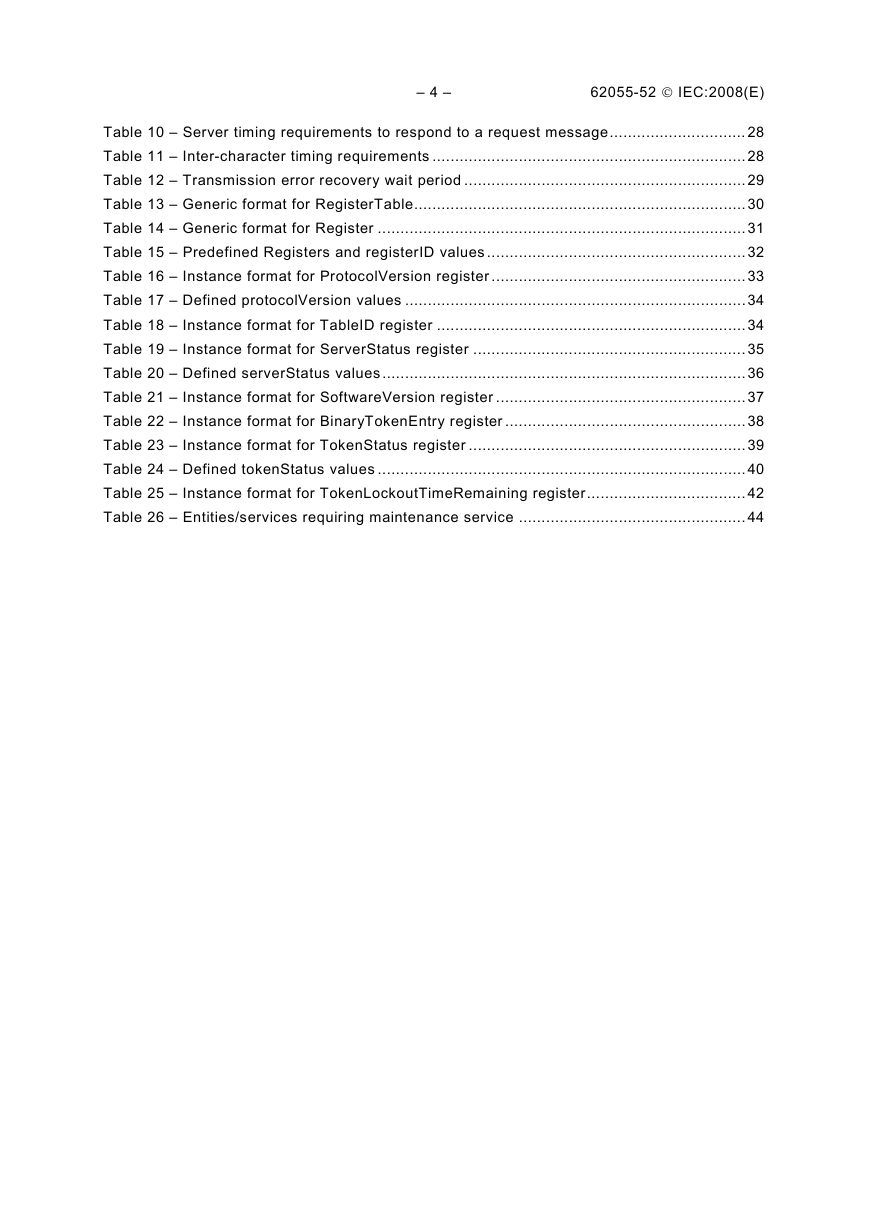
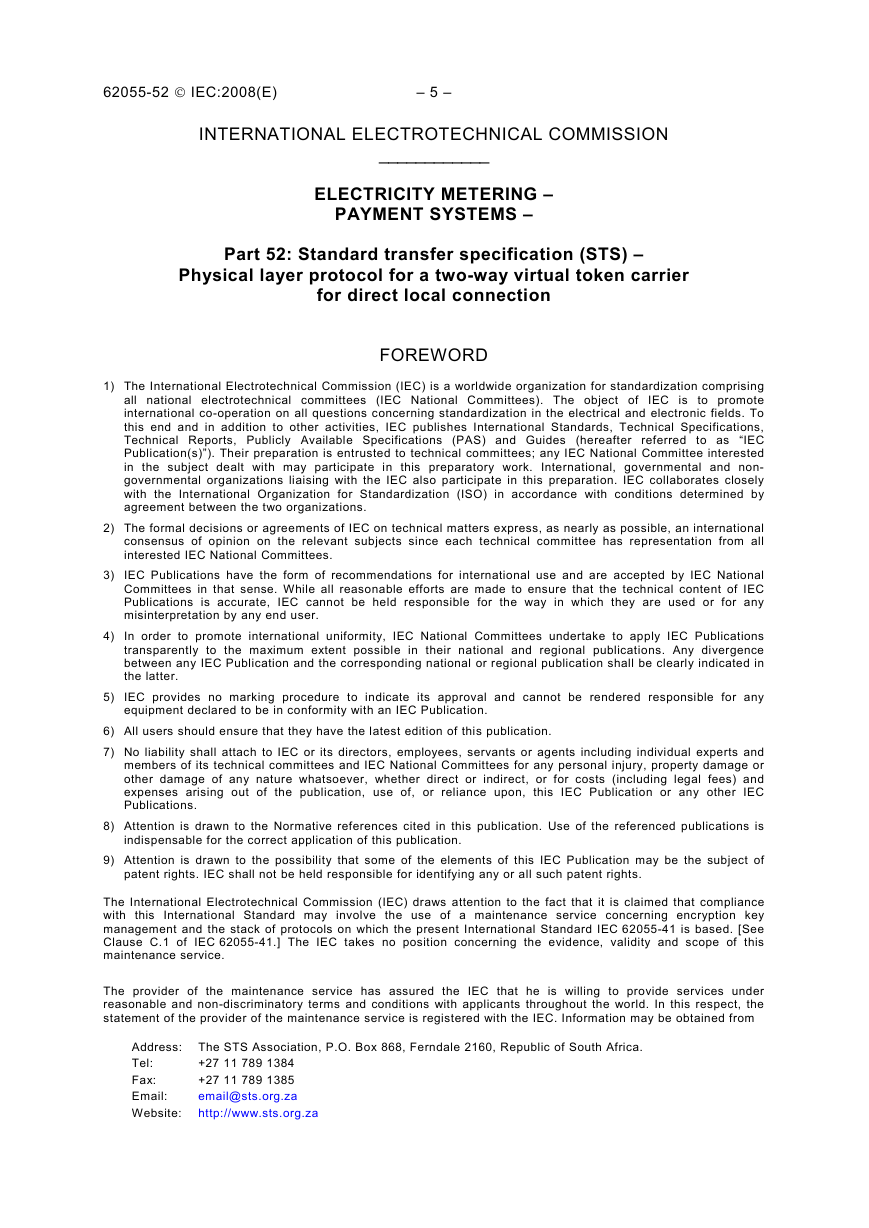
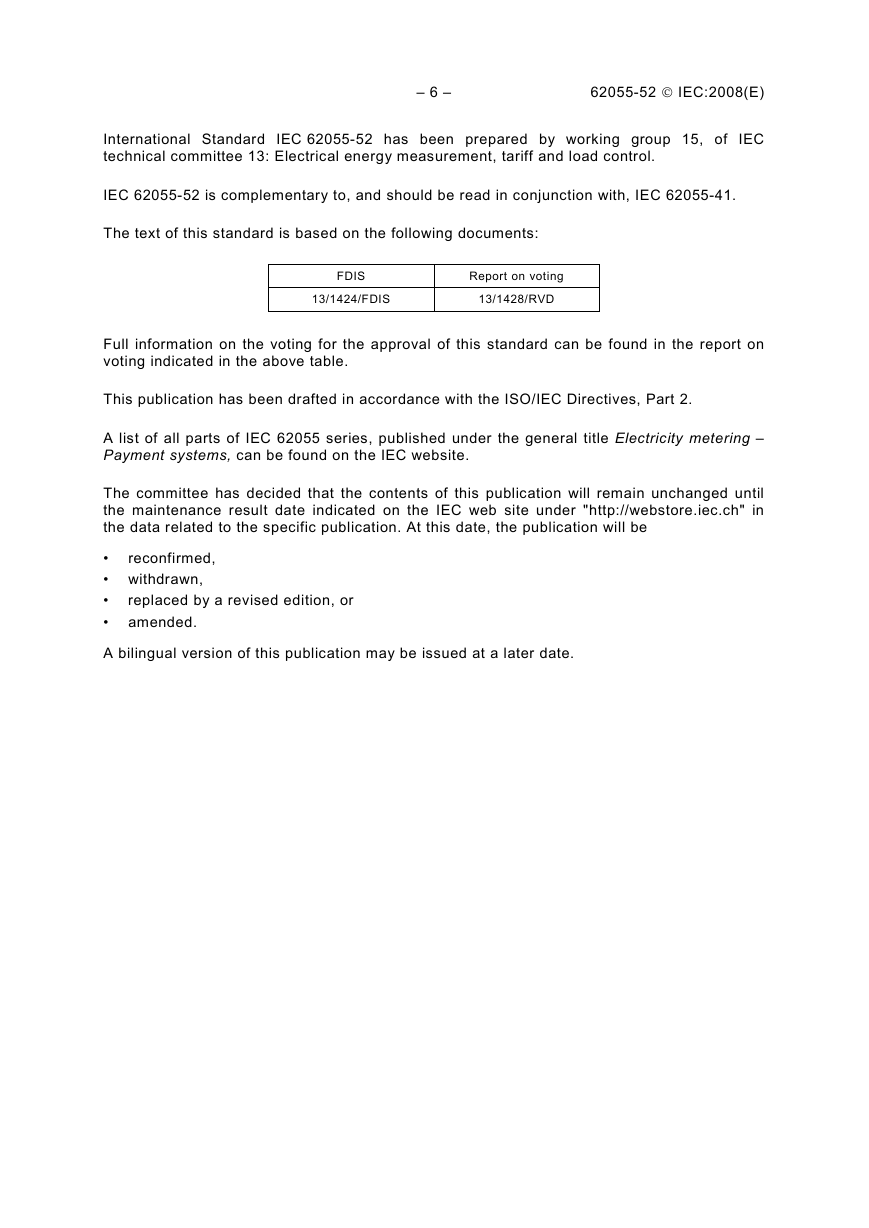








 2023年江西萍乡中考道德与法治真题及答案.doc
2023年江西萍乡中考道德与法治真题及答案.doc 2012年重庆南川中考生物真题及答案.doc
2012年重庆南川中考生物真题及答案.doc 2013年江西师范大学地理学综合及文艺理论基础考研真题.doc
2013年江西师范大学地理学综合及文艺理论基础考研真题.doc 2020年四川甘孜小升初语文真题及答案I卷.doc
2020年四川甘孜小升初语文真题及答案I卷.doc 2020年注册岩土工程师专业基础考试真题及答案.doc
2020年注册岩土工程师专业基础考试真题及答案.doc 2023-2024学年福建省厦门市九年级上学期数学月考试题及答案.doc
2023-2024学年福建省厦门市九年级上学期数学月考试题及答案.doc 2021-2022学年辽宁省沈阳市大东区九年级上学期语文期末试题及答案.doc
2021-2022学年辽宁省沈阳市大东区九年级上学期语文期末试题及答案.doc 2022-2023学年北京东城区初三第一学期物理期末试卷及答案.doc
2022-2023学年北京东城区初三第一学期物理期末试卷及答案.doc 2018上半年江西教师资格初中地理学科知识与教学能力真题及答案.doc
2018上半年江西教师资格初中地理学科知识与教学能力真题及答案.doc 2012年河北国家公务员申论考试真题及答案-省级.doc
2012年河北国家公务员申论考试真题及答案-省级.doc 2020-2021学年江苏省扬州市江都区邵樊片九年级上学期数学第一次质量检测试题及答案.doc
2020-2021学年江苏省扬州市江都区邵樊片九年级上学期数学第一次质量检测试题及答案.doc 2022下半年黑龙江教师资格证中学综合素质真题及答案.doc
2022下半年黑龙江教师资格证中学综合素质真题及答案.doc